by Tom
Share
by Tom
Share
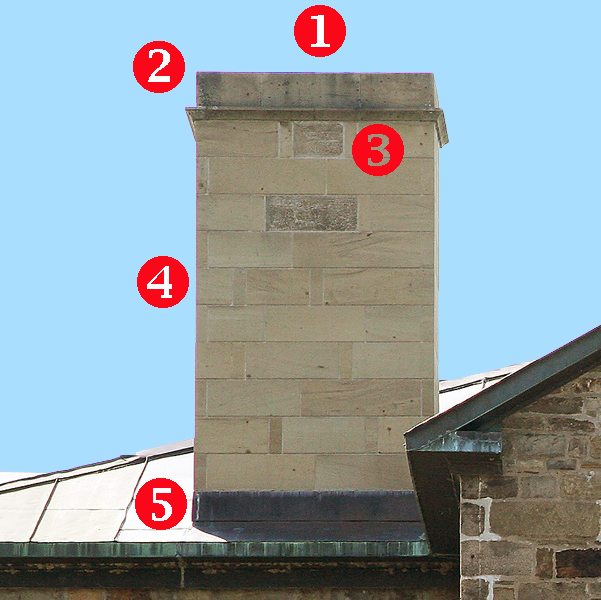
5 Ways to Prevent Chimney Leaks
A leaking pipe, a leaking roof, a leaking window, a leaking chimney – none of them is good. Here are 5 ways make your chimney leak-proof and prevent chimney leaks. See how to fix chimney leaks and prevent them in, through and around your chimney.
#1 Way to Prevent Chimney Leaks: Install a Chimney Cap or Top-Mount Damper
The first place water can get into the chimney is the hole at the top, the flue opening. Preventing rain and snow from entering your chimney flue is the most basic of ways to keep your chimney and fireplace dry. There are two ways to keep water from leaking into your chimney through the flue hole:
The first way is a chimney cap. Most chimney caps attach onto or into the metal or masonry flue or they attach to the cement top of the chimney (the crown.) Its lid or roof extends beyond the edges of the open flue, thereby keeping rain and snow from entering the flue. The screen sides of the chimney cap are there to keep animals from entering your flue.
In high wind situations, rain or snow can sometimes be blown through the mesh screening and into the flue. If you have a chimney cap but still have chimney leaks that you think are the result of water coming in through the flue opening, use a top-sealing damper. Such dampers have a gasket seal: When they are closed, no rain or water can enter. The dampers are only opened when you are using your fireplace. You can get a top-sealing damper alone or also get the chimney cap that fits over it.
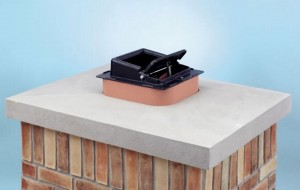 Top Sealing Lyemance Damper without Chimney Cap |
#2 Way to Prevent Chimney Leaks: Waterproof the Cement Crown
Water can enter through the cement chimney crown in two ways:
- Cracks in the concrete chimney crown can lead to chimney leaks.
- Concrete is porous, so water can even leak through a chimney crown without cracks.
First repair chimney crown cracks. We recommend CrownSeal for such cracks. A similar product, CrownCoat, can only be used for horizontal and not vertical surfaces. CrownSeal works on both horizontal and vertical surfaces. In addition to repairing the cracks, it creates a flexible, waterproof coating.
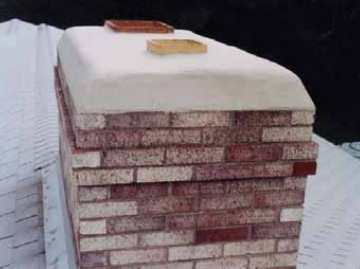
Prevent chimney leaks by repairing crown cracks with CrownSeal.
Even if you have no cracks in the chimney crown, apply CrownSeal as a water repellent for the chimney crown.
#3 Way to Prevent Chimney Leaks: Repair Mortar Cracks
Water can leak into even very small gaps and holes in the mortar between chimney bricks and stones. Repair those mortar cracks with Crack and Joint Sealant. It just brushes on, almost like paint, but it is clear. It not only repairs the mortar, it also waterproofs it.
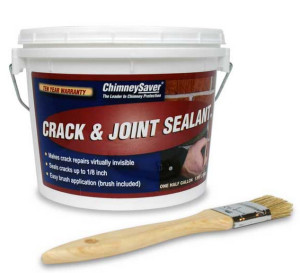
Crack and Joint Sealant ends chimney leaks coming in through the mortar.
#4 Way to Prevent Chimney Leaks: Waterproof the Bricks
Just as concrete is porous and allows water to seep in, bricks are also porous. Every ten years, you need to waterproof the part of the chimney that is exposed to the elements.
Use a vapor permeable water repellent like ChimneySaver’s V.O.C. Compliant Water Repellent. Why vapor permeable? Because you want a sealant that will not trap water vapor inside the bricks and mortar. You want a product that will allow water vapor to escape out of your bricks while simultaneously preventing moisture from entering the bricks. The V.O.C. Compliant formula complies with the V.O.C. regulations in states that prohibit a solvent-based chimney water repellent.
As an added bonus, this products protects you chimney from mildew and fungus stains.
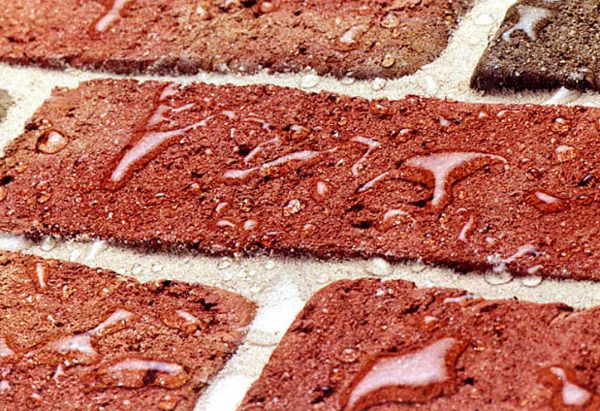
Bricks with Water Repellent applied to let water vapor escape while at the same time keeping water from entering the bricks.
#5 Way to Prevent Chimney Leaks: Keep Water from Entering at the Base of the Chimney
A common source of chimney leaks is at the base of the chimney, where the chimney intersects with the roof. The flashing is supposed to protect the transition, but if it is cracked or split or not sealed well, it will allow in water and melted snow. We recommend FlashSeal as it lasts significantly longer that tar-based sealants.
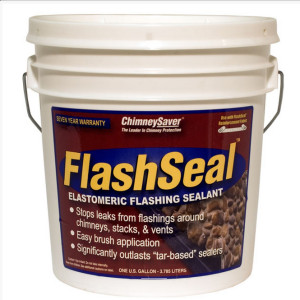
FlashSeal prevents chimney leaks at the flashing.
Take these five steps and you will have leak-proofed your chimney! Do you have other questions about chimney repair? Is your chimney ready for April showers?
When is a headache, nausea, and fatigue not “just the flu” and, instead, carbon monoxide poisoning? And how can you prevent carbon monoxide poisoning in your home? Every year 20,000 Americans are treated in emergency rooms for carbon monoxide poisoning. But many of those at first thought they were dealing with a run-of-the-mill bug. Those […]
Which of these summer fireplace myths do you believe? Learn the facts that might surprise you about fireplaces in summertime. Summer Fireplace Myth #1: Since you won’t be burning a fire in hot weather, your fireplace will have to suffer from Black Hole Syndrome. A fireplace candelabra brings the tiny fires of candlelight to your fireplace without […]
Some people find a bird stuck in their chimney or fireplace and panic. Others search for a solution such as the ones we offer for removing a bird stuck in chimney or sitting in a fireplace. The most creative come up with their own unique solution for a bird stuck in chimney. That’s what Nic did when […]
Outside Mount or Outside Chimney Cap Measure Guide: What to Measure to Get the Right Fit – Outside mount chimney caps fit over the entire chimney, like the lid on a shoe box. The Vertical Skirt on Outside Mount chimney caps attach to the sides of the chimney with screws or chimney cap adhesive. Many […]
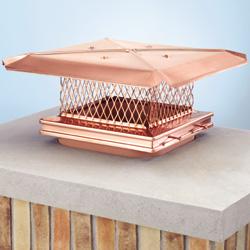
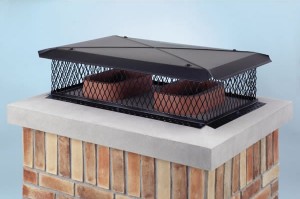
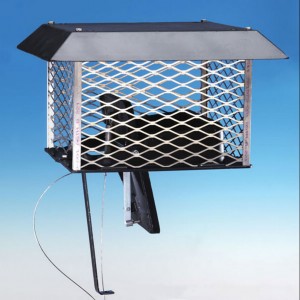
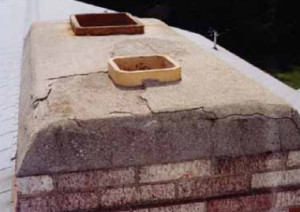
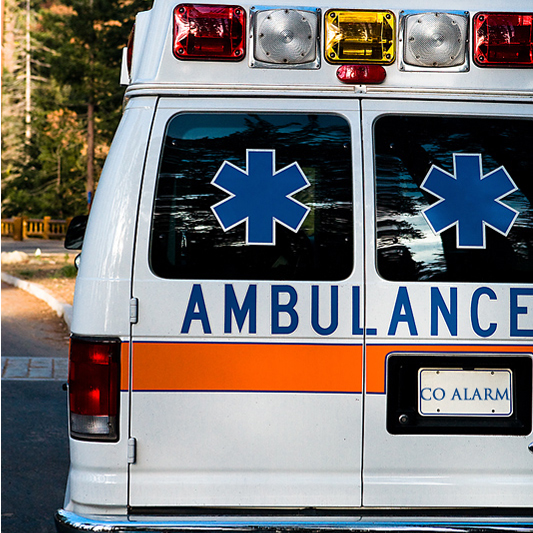

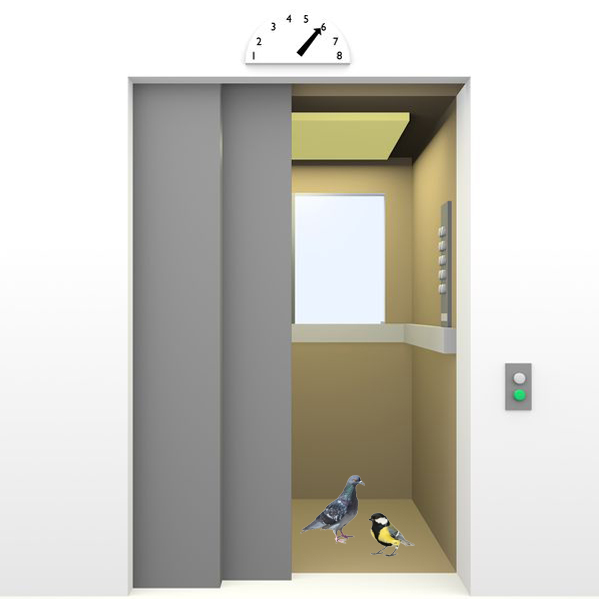

It is difficult to pinch the fireplace leaks. They can come from almost anywhere on the chimney. Here are four common sources of the leak. Once you get the source, you may need a fireplace supporter to fix it. If yes, Our skilled chimney technicians and masons have years of quality experience repairing and servicing all types of chimney leak around New York.
Remember, because you know that there is a leak, starting this process on top will mean that you will not be able to point out the source. The one you are trying to do separates the location of the leak by covering each plane from the lowest point to the highest and crosses each non-regional area whenever you go.
I have coated the crown and have a cover on the flue but the chimney still has water leaking into the flue, drip drip drip after long rains. Since the top seems well protected (and the flue cap is in place) can water come thru chimney flashing or other adjacent roof areas and get only into the flue and NOT get into the house around the chimney at ceiling? Baffling!!
Rob, those drip, drip, drips can, indeed, be baffling. Yes, rain water might be seeping in around the chimney flashing. Best to have a professional roofer and/or chimney sweep help you diagnose the issue. Best of luck!